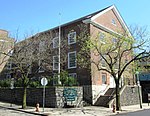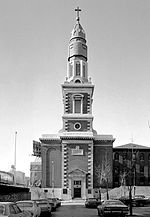Cabaret Red Light

Cabaret Red Light was a theater group based in Philadelphia that performed vaudeville, burlesque, spoken word and puppet theater, set to original music by The Blazing Cherries. In their first season, between November 2008 and July 2009, Cabaret Red Light staged the series "The Seven Deadly Sins". Their second and third series ("The Experiment", about a cabaret that builds a time machine, and "The Seven Deadly Seas", a pirate and gypsy-jazz show aboard the barquentine Gazela) began in 2010, and they recently performed the premiere of their ballet-and-burlesque version of The Nutcracker based on E. T. A. Hoffmann's original Gothic short story The Nutcracker and the Mouse King. Cabaret Red Light’s shows have been described as a blend of Agitprop and burlesque, an unlikely combination that earned them the title “The Best Marxist Girlie Show in Hell.” In their third show in the Seven Sins series, WRATH!, the group handed out pamphlets announcing the emergence worldwide of “pornographic socialism.” In the finale of their fifth show, GLUTTONY!, they immersed a showgirl (Annie A-Bomb) in liquid chocolate and invited members of the audience to lick it off. When Holly Otterbein of Philadelphia City Paper asked co-director Peter Gaffney about the politics of the show, he responded, "The common ways in which we entertain ourselves — TV, movies, the Internet — involve sitting in a room by yourself. Compare that to the licking scene. It's the opposite. It's real people in a room experimenting with themselves and testing out their own limits." In other interviews, however, Gaffney has denied that Cabaret Red Light has any overtly political agenda. "We think that theater has no business being in politics," he stated in an interview with Emily Orrson of The Daily Pennsylvanian, "and neither does the government."
Excerpt from the Wikipedia article Cabaret Red Light (License: CC BY-SA 3.0, Authors, Images).Cabaret Red Light
North Bodine Street, Philadelphia Center City
Geographical coordinates (GPS) Address Nearby Places Show on map
Geographical coordinates (GPS)
| Latitude | Longitude |
|---|---|
| N 39.95571 ° | E -75.14403 ° |
Address
The Painted Bride Art Center
North Bodine Street
19106 Philadelphia, Center City
Pennsylvania, United States
Open on Google Maps








